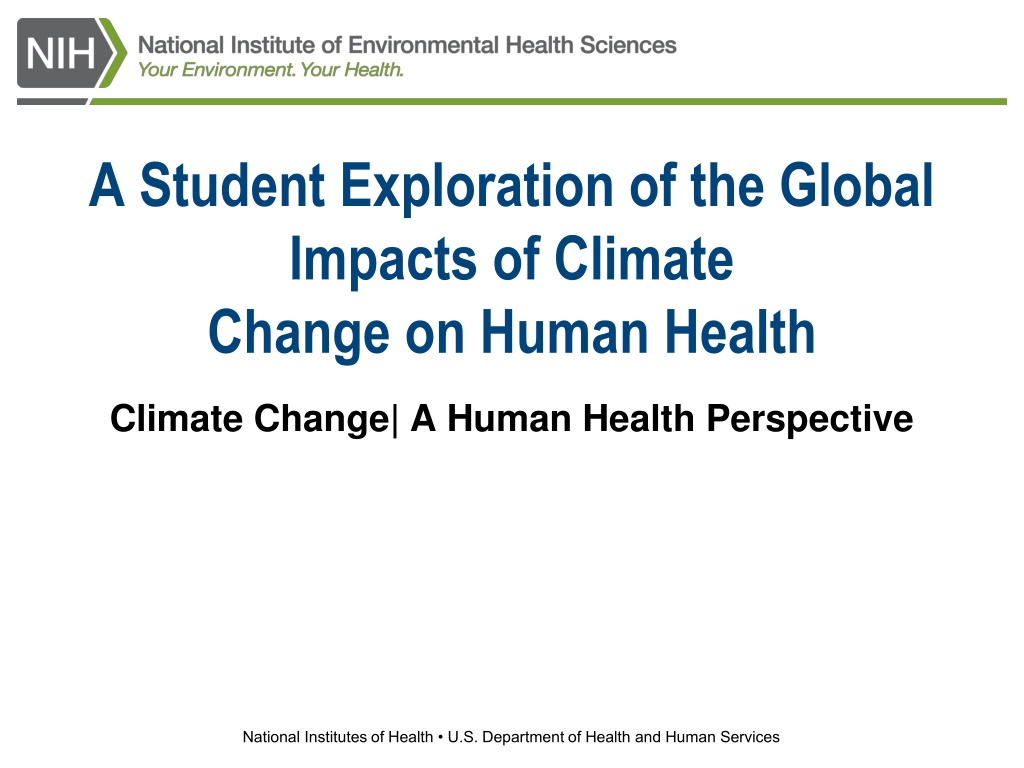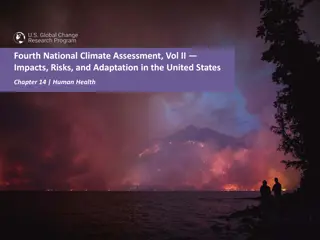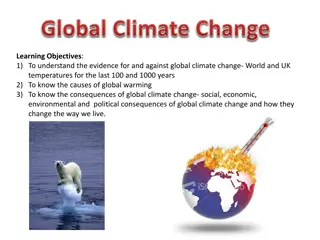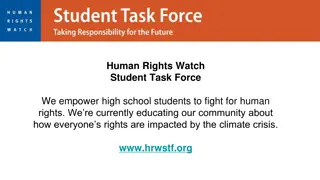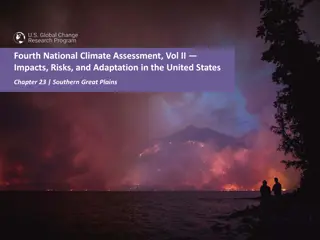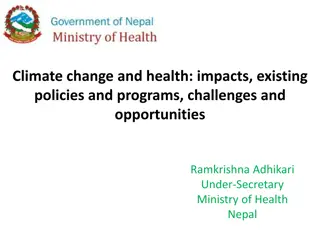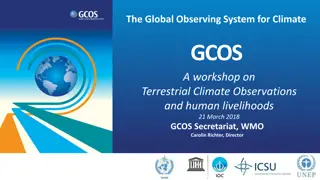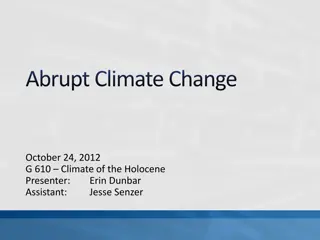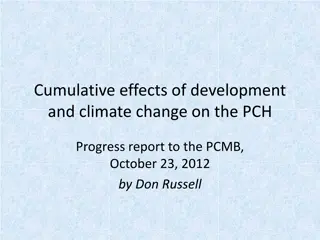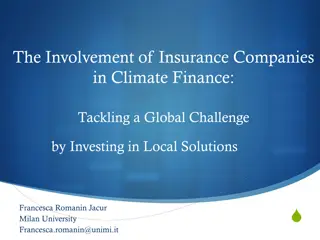A Student Exploration of the Global Impacts of Climate Change on Human Health
This research delves into the effects of climate change on human health, covering how a warming climate, changes in precipitation, and increased flooding frequencies impact various health aspects such as infectious diseases, nutrition, and mental health. The study provides a visual model illustrating the cause-and-effect relationship between climate drivers, environmental conditions, hazards, and health effects due to climate change. Detailed directions are given for exploring specific impacts in temperature, storm, radiation-related impacts, vector-borne diseases, food and water-borne diseases, air quality, nutrition, occupational health, mental health, and violence/conflict implications. The information is derived from reputable sources like the National Institutes of Health and the U.S. Department of Health and Human Services.
Download Presentation

Please find below an Image/Link to download the presentation.
The content on the website is provided AS IS for your information and personal use only. It may not be sold, licensed, or shared on other websites without obtaining consent from the author. Download presentation by click this link. If you encounter any issues during the download, it is possible that the publisher has removed the file from their server.
E N D
Presentation Transcript
A Student Exploration of the Global Impacts of Climate Change on Human Health Climate Change| A Human Health Perspective National Institutes of Health U.S. Department of Health and Human Services
List the impact(s) of a warming climate on human health. The colors on the map show observed temperature changes over the past 110 years (1901-2012). Source: IPCC, 2013: Summary for Policymakers. In: Climate Change 2013: The Physical Science Basis. National Institutes of Health 2 U.S. Department of Health and Human Services
List the impact(s) of a wetter climate on human health and of a drier climate on human health. Maps of observed precipitation change from 1901 to 2010 and from 1951 to 2010. Trends in annual accumulation were calculated using the same criteria as the previous map. Source: IPCC, 2013: Summary for Policymakers. In: Climate Change 2013: The Physical Science Basis. National Institutes of Health 3 U.S. Department of Health and Human Services
Flooding Frequency Source: IPCC 2014, 5AR Chapter 3: Freshwater Resources, Pg. 248. National Institutes of Health 4 U.S. Department of Health and Human Services
Visual Model | Cause-effect The climate driver is the specific climate changethat leads to an environmental condition. The environmental conditionis what arises in response to a specific climate change. An environmental hazard is what will directly lead to a negative health effect. National Institutes of Health U.S. Department of Health and Human Services 5
Flooding Photo Credit: Ch. 4: Impacts of Extreme Events on Human Health. The Impacts of Climate Change on Human Health in the United States: A Scientific Assessment. U.S. Global Change Research Program Some individuals and groups may be more vulnerable to water-borne infection as a result of floodwaters. National Institutes of Health U.S. Department of Health and Human Services
Directions READ your assigned impact section: Temperature, storm and radiation- related impacts Chapter 11 Sections 4.1 4.3 Vector-borne and other infectious diseases Chapter 11 Section 5.1 Food and water-borne diseases Chapter 11 Section 5.2 Air quality Chapter 11 Section 5.3 Nutrition and occupational health Chapter 11 Sections 6.1 6.2 Mental health and violence/conflict Chapter 11 Sections 6.3 6.4 National Institutes of Health 7 U.S. Department of Health and Human Services
Graphic Organizer National Institutes of Health 8 U.S. Department of Health and Human Services
National Institutes of Health U.S. Department of Health and Human Services
National Institutes of Health U.S. Department of Health and Human Services 10
National Institutes of Health U.S. Department of Health and Human Services 11
National Institutes of Health U.S. Department of Health and Human Services 12
Climate Change Human Health Effects Vector borne infection Water-related infection Food-related infection Temperature Cardiovascular and respiratory illness Heat related illness and death Precipitation Humidity Mental health and Stress-related disorders Weather-related injury and death Weather patterns National Institutes of Health 13 U.S. Department of Health and Human Services
Mitigation strategies Actions we can take to reduce the severity of climate change by reducing greenhouse gas emissions. Photo Credit: Official Navy Page from United States of AmericaMC2 Daniel Barker/U.S. Navy (Solar panels.) [Public domain], via Wikimedia Commons National Institutes of Health 14 U.S. Department of Health and Human Services
Mitigation can make a difference Source: IPCC, 2013: Summary for Policymakers. In: Climate Change 2013: The Physical Science Basis. National Institutes of Health 15 U.S. Department of Health and Human Services
Mitigation can make a difference Source: IPCC, 2013: Summary for Policymakers. In: Climate Change 2013: The Physical Science Basis. National Institutes of Health 16 U.S. Department of Health and Human Services
Adaptation strategies Actions we can take to reduce our risk/vulnerability to climate impacts. Photo Credit: CDC, Prevention & Control (2017). National Institutes of Health 17 U.S. Department of Health and Human Services
